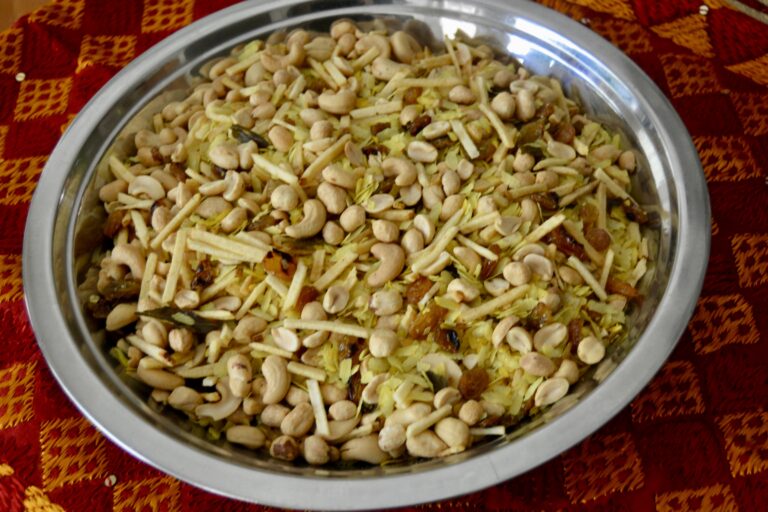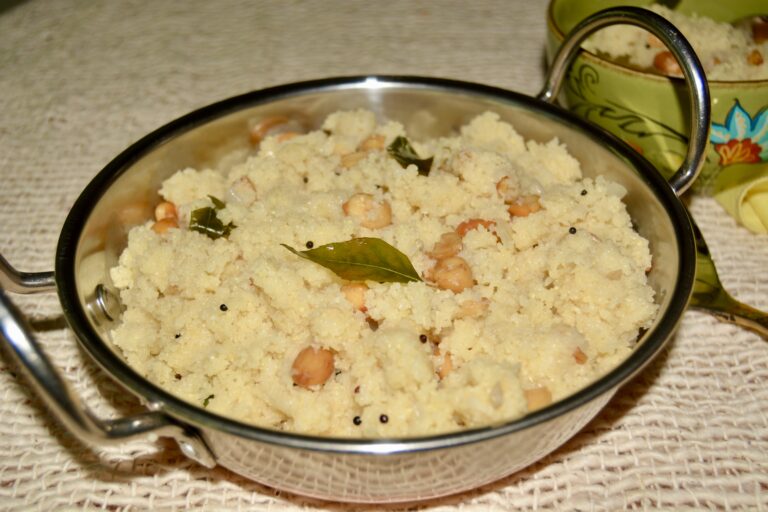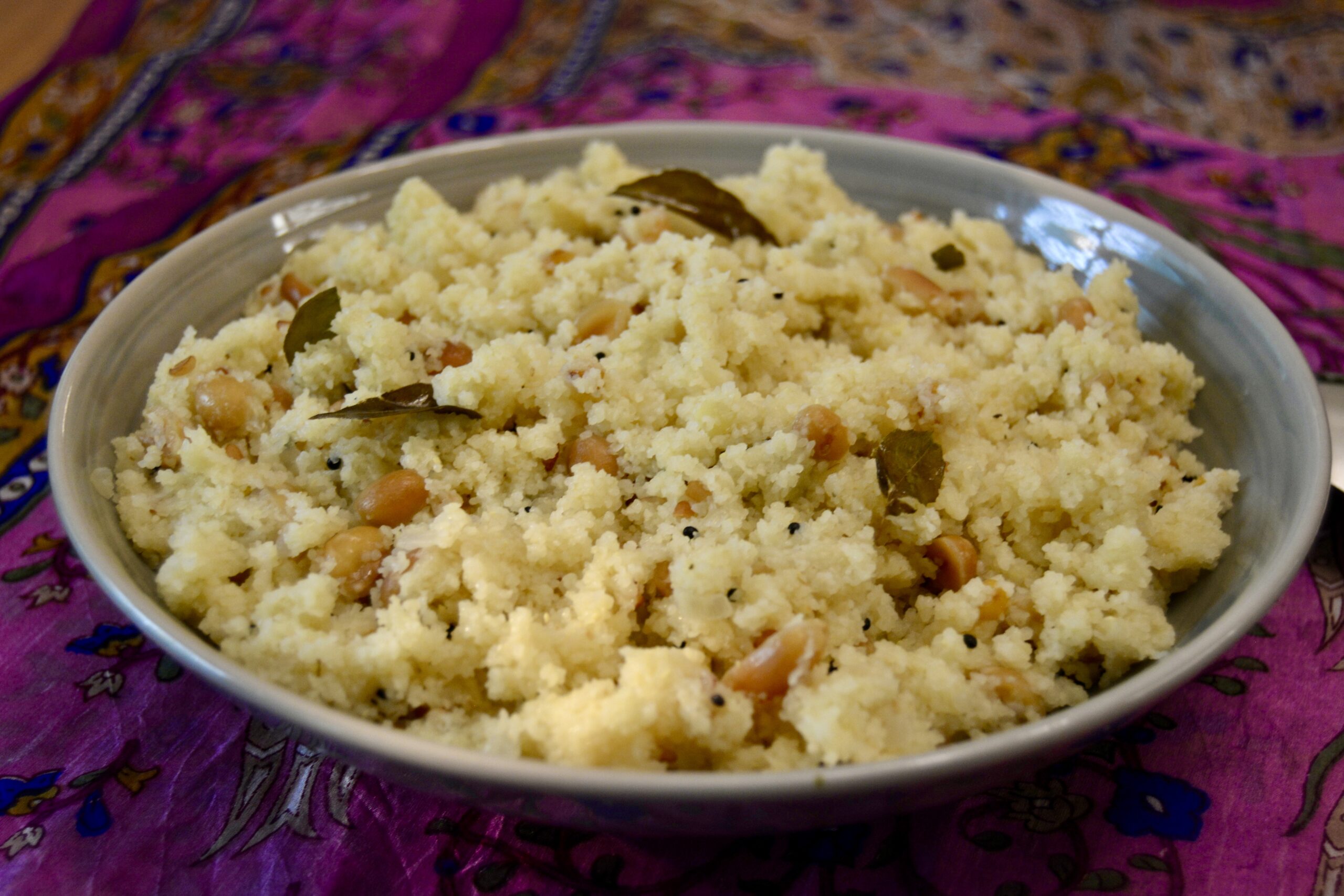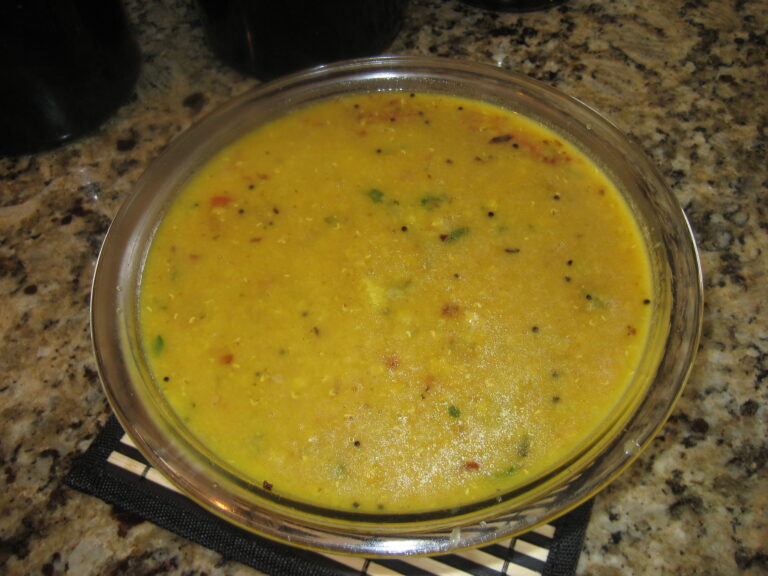Christmas was always a great time for us. Mama and Dad always made it a very special and memorable celebration for us. Two weeks before Christmas, Mama would start preparing the “pakwan” (translated loosely means goodies, sweet and savory), that was prepared for festivals.
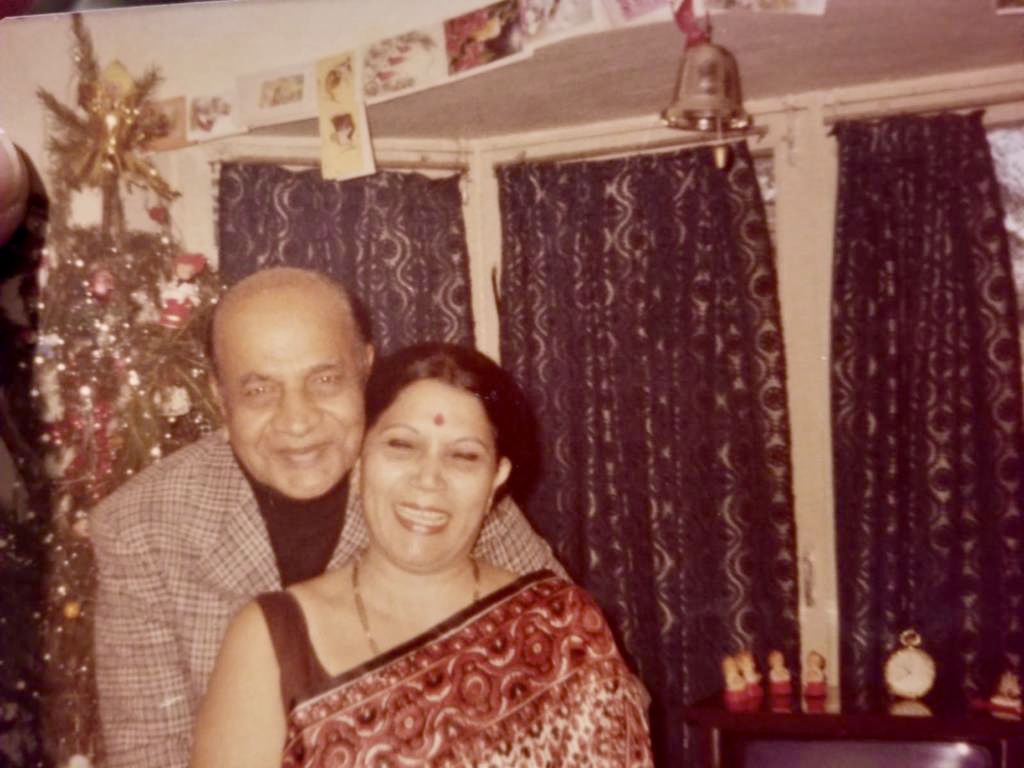
Christmas Day was an open house for family, friends, and acquaintances. Members of Dad’s regiment would come in a steady stream to wish us a “Happy Christmas.” Hot tea and coffee (with milk and sugar, please), cold drinks, and pakwan would be served nonstop from 10:00 a.m. to 6:00 p.m.
When we were old enough to handle a heavy-laden tray, several of us older siblings would be called on to help in the serving. In India it does not matter what religion you are, you celebrate with your friends in their festivals. Needless to say, with all the many religious festivals, we were celebrating every month!!
Chivda was a favorite with us. When you look at the ingredients below you can understand why. Mama always fixed it at home, as she did not like to get it from the store.
Today, you can buy store-bought packets but I still enjoy the homemade version as I can temper the chili heat to my palate!
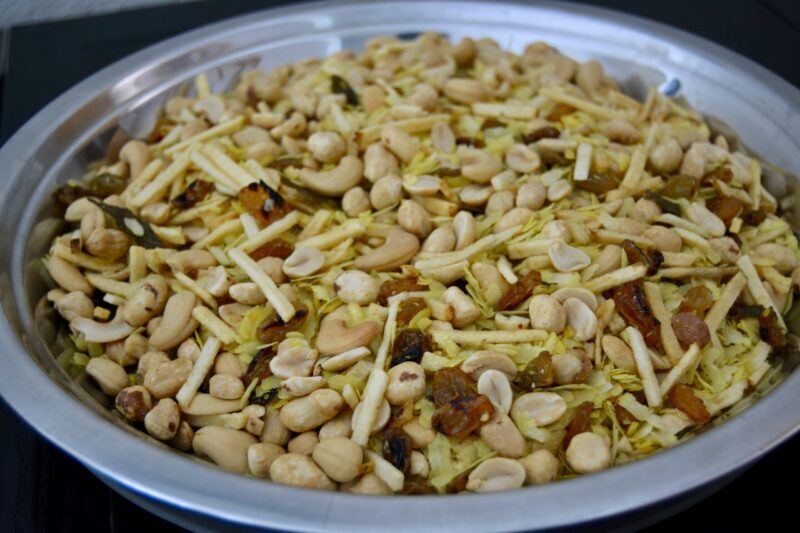
Chivda (All in One Savory Snack)
Ingredients
- 16 oz salted cocktail peanuts
- 18 oz salted cashew nuts (or add more to your taste)
- 16 oz salted shoestring potatoes (available in most grocery stores)
- 1 cup golden raisins
- 3 cups thick poha (flat beaten rice, available at most Indian grocery stores)
- 2 green chilies (chopped into small bits)
- 15-20 curry patta (Indian curry leaves, available at most Indian grocery stores)
- ¼ tsp turmeric powder
- ½ tsp chili powder (optional, more or less to your taste)
- 3 tbsp cooking oil (if deep frying, you'll about 2-3 cups of oil)
Instructions
- On medium heat, heat a tablespoon of the oil in a deep skillet or wok (at least 12-14" in size).
- Add the chopped green chilies and curry patta. Stir for about 30-40 seconds until the curry patta and green chilies darken. Turn off the heat. Remove and place on a paper towel to drain.
- Add another tablespoon of oil to the skillet. Heat on medium-high and add the raisins. Stir for about 1 minute until the raisins plump out. Do not burn. Turn off the heat, remove the raisins, and drain them on a paper towel.
- In the same skillet, on medium heat, put another tablespoon of oil and add the turmeric. Stir 15 seconds, then add the beaten rice. Let sauté, stirring occasionally, for approximately 10 minutes. The flakes will get a little crunchy, but they do not have to be browned.
- Once the poha is lightly browned, turn off the heat. Now add all the other ingredients. Salt is not needed since there is enough in the other salted ingredients.
- If you want it spicy, you can add some chili powder or chili flakes to suit your taste. Stir carefully so as not to break up the poha. Mix all ingredients well.
- Let cool and store in airtight containers.Great as a tea time snack or if you were getting an attack of the munchies! These do not last long enough in my house to give you shelf time. If I had to guess, I would say at least a month.

